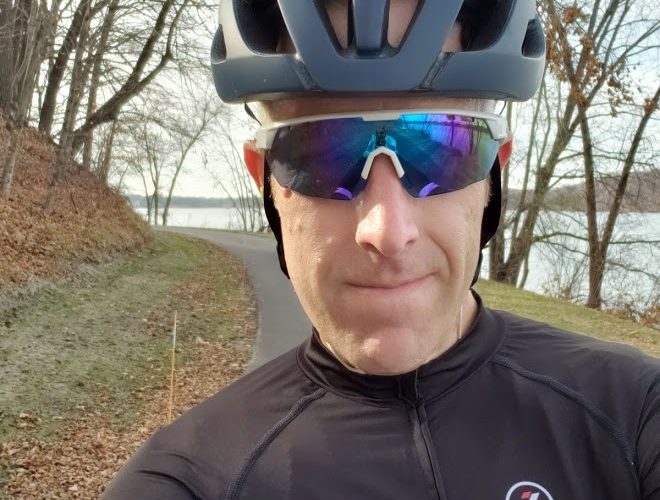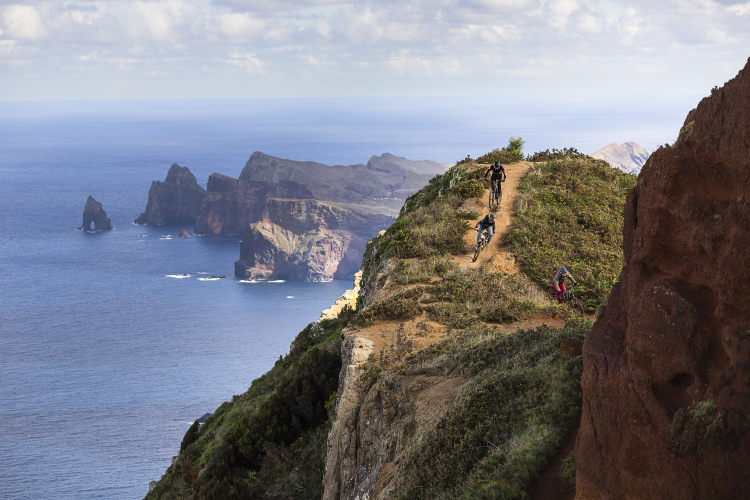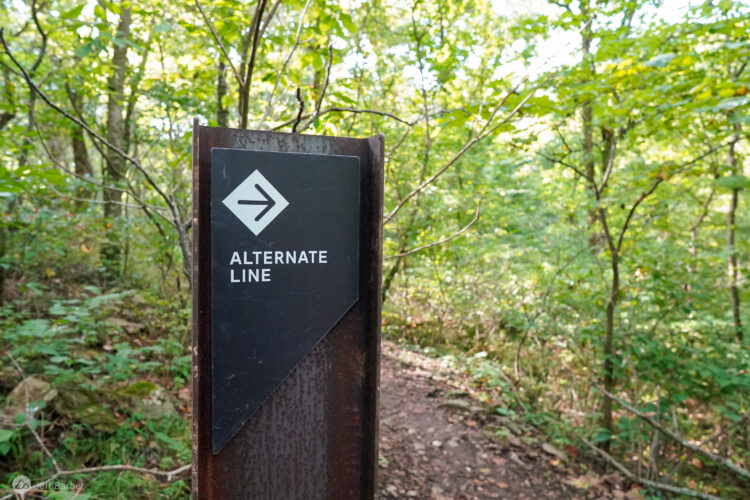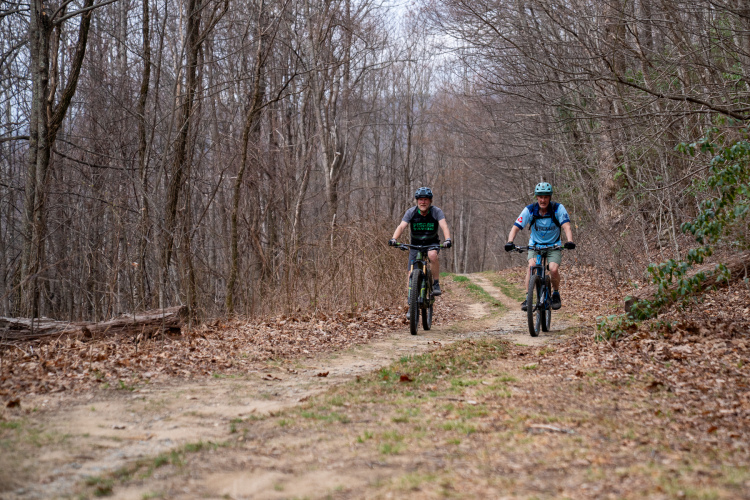When I was in college I biked quite a bit. Mostly we used the logging roads all over our 28,000 acre campus at Berry College. On one of these rides, I got in a rut left by a logging truck. I was cruising downhill at a fast pace and hit the edge of the rut. I flew off the bike, landed in the rut on the other side of the road, slid what felt like 100 yards, and slammed my chin into the ground when I came to a stop.

My boyfriend came running down the road; I tried to stand up but almost passed out. So I sat in the road with blood dripping onto my shoe until my head stopped swimming, and we walked back to the car. I pushed my poor bike with its mangled front tire and wondered if I’d ever bike again. It was several months before I did.
I was reminded of this incident this past weekend when talking with an acquaintance at a party. Knowing her husband mountain biked, I asked if she did. “I haven’t in over a year. I had a really bad wreck last year and dislocated my ankle and, I just haven’t been ready to get back on a bike yet.”
First of all, OUCH! That had to hurt. Secondly, how do you get past that fear of crashing again? For me, that wreck at Berry College was the one that proved to me that I could get seriously hurt biking. I think this girl had the same thoughts. Still, if the goal is to get back on the bike and become a better biker, how do you do that?
One way is to just get back on the damn bike as soon as possible. This might work for some people, and honestly, sometimes it’s the only way. I had a hard crash a few years ago on Western Rim, but we were maybe 4.5 miles into a 14 mile ride, so what option did I have? Get on the bike and keep moving. I rode the obstacles ahead that I knew I could ride, and walked the ones that I wasn’t so sure about.
This doesn’t work for everyone, though. I think this method is especially difficult for beginner or intermediate riders. So what are some alternatives for getting over your crash?
2. Ride a trail you love and feel comfortable on.
There has to be one. Out here, if I had to start over with biking, I’d start on Rustler’s Loop. I feel very comfortable on that trail, it has beautiful views, and I always have a great ride on it. So find that trail. If you don’t have one, then find the easiest trail you can, even if it’s a paved bike path. The point is to get comfortable with your bike again.

3. Set your expectations low.
On your first mountain bike ride after a big wreck, don’t go into it thinking “Yeah! I’m going to be just as hardcore as ever!” Just set your sights on having a great ride and having a good time. That might sound a little namby-pamby, but honestly? You just recovered from a broken arm (for example); give yourself a break! No pun intended. Don’t go into it expecting to ride all the hardest drops or jumps on the trail.
4. Think positive.
This might sound contradictory to #2, but it isn’t. Just saying to yourself, “I’m going to have a great, relaxing ride today,” is a positive thought. I honestly believe that having a positive attitude can make a huge difference in your riding. If you go out there thinking, “I’m never riding anything hard ever again,” then you probably won’t.
As Henry Ford once said, “Whether you think you can or you think you can’t, you’re probably right.”
5. Ride the obstacles you know you can ride.
Just because you crashed doesn’t mean you should start completely from scratch. If you’re back on your favorite trail and you reach a ledge drop that you’ve always ridden, then ride it again. This is how you build your confidence back up. You say to yourself, “self, you’ve always ridden this ledge. You know you can do it.” In fact, unless I’ve recently crashed on something, my rule is that if I’ve ridden something successfully once, I have to ride it every time after that, because I know I can.
6. Have FUN.
Take time to enjoy cruising through a patch of desert wildflowers. Stop and take pictures of crazy lizards on the trail. Sit down on a big rock and enjoy the silence, view, your Clif bar, whatever. Just enjoy the ride. Remember why you started biking in the first place, and just have fun.

7. Ride with that group.
You know how we all have multiple groups of bike buddies? You’ve got those people you ride with when you want to PR on a section of trail, or when you’re attempting a KOM/QOM. You’ve got that group you like to cruise with on “lazy” ride days. Then you’ve got your core group: a friend, a spouse, a family member. These are the people who don’t care about how fast or slow you are, which obstacles you ride or don’t, or even which trail you ride. They just like to bike with you, period. This is the time to ride with that group. Maybe you’ll be at the top of your game on this first ride out! But more than likely, you’ll still be worried about your reconstructed ACL, your recently-healed collarbone, or that scab still healing on your leg. You want to be with the folks you feel the most comfortable around.

8. Put it out of your mind.
This ride is not the time to replay the crash in your head. It’s not the time to think about how you just hit that one rock wrong and then suddenly there was blood and… NO. Clear your mind of that crash. Do whatever it takes to ride with a clear mind. Sing a song in your head, keep up a steady conversation with anyone around, even talk to yourself if you have to.
9. Take the next step.
Probably, at some point, you’ll have to again face that obstacle on which you crashed. On our Western Rim ride, I walked the ledge that I endoed on for a few months. I wouldn’t even attempt it. No one bugged me about it. Then one day, I was feeling confident. I was riding with my boyfriend and, as he got closer to the ledge, I noticed he slowed down so that I could see exactly which line he took down the ledge. I took a deep breath and followed him down it–successfully!

You always have to face down that obstacle. You can’t let it win. You can leave it alone for a while. Let it think it’s beaten down another biker. But then, when that ledge, that jump, that tight drop thinks it has won, you go out there and conquer it. Maybe it takes you only 3 weeks, maybe it takes you a year. In either case, facing down your fear is truly the only way to fully recover from a crash.
So no matter what route you choose, from the get-right-back-on-the-bike method to the slower, but effective, easing-back-into-it method, just do your best to get back on your bike. You’ll be glad you did.










20 Comments
Jun 24, 2014
Great article!
Jun 24, 2014
Recently I broke my finger, and although I elected to ride Fruita, Moab, and a few other places before I splinted it and let it heal...no biggie...but the mental toll was huge. Not the broken finger per se, but the few falls I had after that because I was guarding it so much, and ultimately tweaked it to the point that the thought of crashing and hurting it more kept me from getting back on the saddle.
Coincidentally, I did quite a few things you mentioned (like riding easier trails and stopping to smell the roses), and this past weekend, I hit the bike park and was going faster and taking bigger lines than I did before I was injured. I think what helped me most was just following the lines of someone I trust, and not something I feel I have something to prove to.
The injury helped me do something I needed though, which is get back to the roots of why I started riding in the first place. Slow down, enjoy the ride, hit the hard stuff but don't sweat it if you don't. Forget Strava. Forget wheel size. Forget everything except working on technique while immersing yourself in the nature God has made for us and making friendships. And if I need to, I can still braaap right past "things" in my way. :)
Jun 24, 2014
Jun 24, 2014
Apr 9, 2022
Jun 27, 2014
Jun 24, 2014
As I healed, braced in bed with almost no motion for 3 months, I didn't even think about riding. I tried to look at my mountain bike magazines as they arrived in the mail, but the pictures of riders jumping got me nervous. By 6 months after the ride I was back riding in the woods. That was 11 years and countless rides ago.
Like the song says, "I get knocked down but I get up again..........".
Jun 26, 2014
Stuff happens and I was not even being a yahoo. Just mis-judged a small rock under some overgrowth on an incline and jettisioned over the handlebars.
Jun 26, 2014
Jun 24, 2014
Seriously, though--great article! Each of your 9 points is spot on. I learned the value of points 2&5 long before I started cycling. After some massive, painful and scary biff while skiing, I would simply do #1 (get back on the skis) depart the rock-strewn cliffs for a bit and head back to a groomer (trail/obstacles I could easily handle) where I would employ #s 3, 4, &6. After getting my wits about me on a groomer, it was back into an easier non-groomed trail, maybe through some relatively easy moguls or widely spaced trees. After a few runs, I was back where I biffed and ready to rock.
Works just as well with bikes.
Jun 24, 2014
Jun 26, 2014
Jun 26, 2014
Jun 26, 2014
Jun 26, 2014
The tips are good, and different ones will work for each individual. I set a goal to be able to do one particular route to consider myself "fully recovered". Revisiting and riding the crash site was therapeutic...also I told friends who saw me crash to be brutally honest on how I messed up...we concluded it was a truly freak accident (I hoped there was an identifiable mistake to learn from).
Jun 24, 2014
I think one lesson from the crash is that sometimes it can be dangerous to get too comfortable with a trail. I believe I got a little overconfident and got too much speed to be able to make it onto the bridge after a little root drop and a curve.
I am going stir crazy and cannot wait to get back on the bike, but I know my first trail ride will be a little different than before. I will try to do #5, but I must admit that I have a fear that I did not use to have before since I got seriously hurt on something that I have always ridden.
Jun 26, 2014
Bill D
Jun 24, 2014
Jun 24, 2014
That #5 will probably be difficult for you, but just keep trying. Good luck healing!
Jul 29, 2014
I have come to accept that there is always going to be someone better than me.
I hope you recover well, especially given your age. I am 22 and seem to be healing quite fast, but it feels like it is taking forever to get back to riding trails.